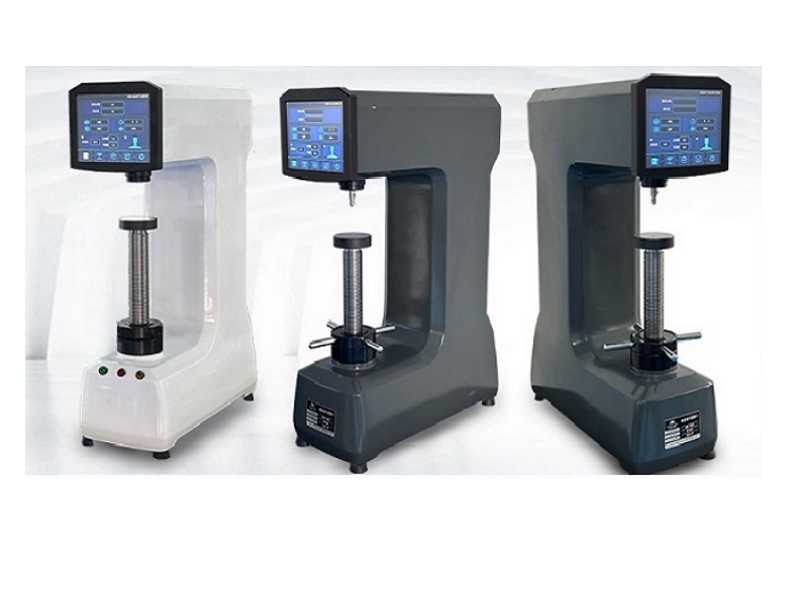1) Can a Rockwell hardness tester be used to test the hardness of the steel pipe wall?
The test material is a SA-213M T22 steel pipe with an outer diameter of 16mm and a wall thickness of 1.65mm. The test results of a Rockwell hardness test are as follows: After removing the oxide scale and decarburization layer on the surface of the sample with a grinder, the sample is placed on a V-shaped workbench, and the HRS-150S digital Rockwell hardness tester is used to directly test the Rockwell hardness on its outer surface with a load of 980.7N. After the test, it can be seen that the steel pipe wall has slight deformation, and the result is that the Rockwell hardness value measured is too low, resulting in the invalid test.
According to GB/T 230.1-2018 «Metallic Materials Rockwell Hardness Test Part 1: Test Method», the Rockwell hardness is 80HRBW and the minimum sample thickness is 1.5mm. The thickness of sample No. 1 is 1.65mm, the thickness of the decarburized layer is 0.15~0.20mm, and the thickness of the sample after removing the decarburized layer is 1.4~1.45mm, which is close to the minimum thickness of the sample specified in GB/T 230.1-2018. During the test, since there is no support in the center of the sample, it will cause slight deformation (which may not be observed by the naked eye), so the actual Rockwell hardness value is low.
2) How to select the surface hardness tester for steel pipes:
After many tests on the surface hardness of steel pipes, our company has come to the following conclusions:
1. When conducting surface Rockwell hardness test or Rockwell hardness test on the surface of thin-walled steel pipes, insufficient support of the pipe wall will cause deformation of the specimen and lead to low test results;
2. If a cylindrical support is added in the middle of a thin-walled steel pipe, the test results will be low because the axis of the pressure head and the direction of load loading cannot be ensured to be perpendicular to the surface of the steel pipe, and there is a gap between the outer surface of the steel pipe and the fitted cylindrical support.
3. The method of converting the measured Vickers hardness to Rockwell hardness after inlaying and polishing the steel pipe sample is relatively accurate.
4. After removing the oxide scale and decarburization layer on the surface of the steel pipe and machining the test plane on the outer surface and inlaying it, the surface Rockwell hardness is converted to Rockwell hardness, which is relatively accurate.
Post time: Jun-13-2024



